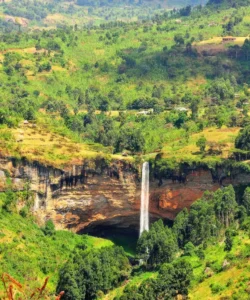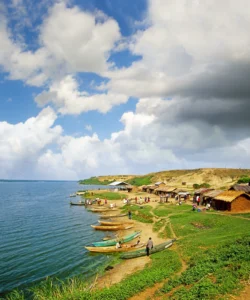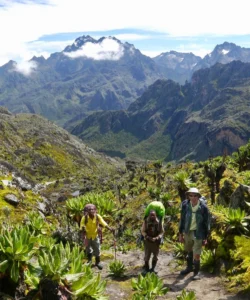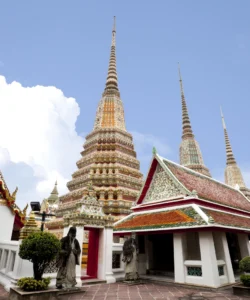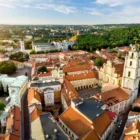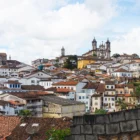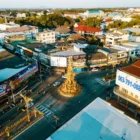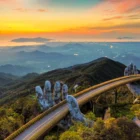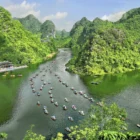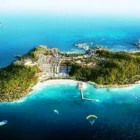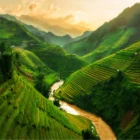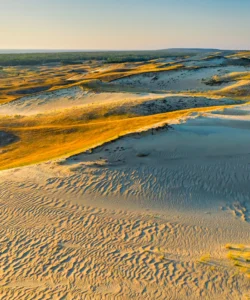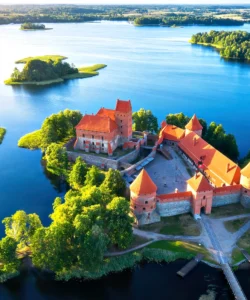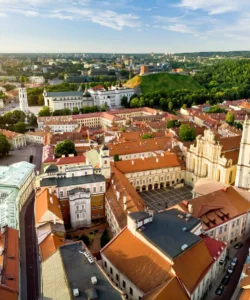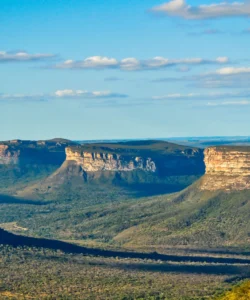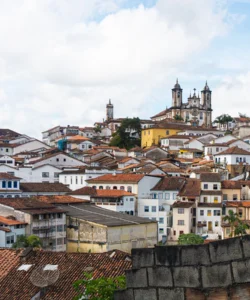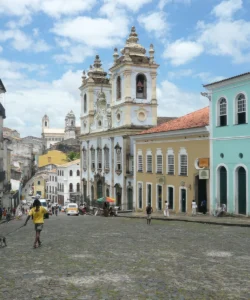The River Nile, famously the longest river in the world (though some recent measurements challenge this with the Amazon), has long captivated explorers and civilizations with the mystery of its origin. While its true source is a complex network of tributaries, the widely recognized and historically significant “Source of the Nile” is located at Jinja, Uganda, where the White Nile emerges from Lake Victoria. This site marks the beginning of the White Nile’s epic journey northward, attracting visitors eager to stand at the headwaters of this legendary river.
Name: The Source of the River Nile, Jinja
Address: Jinja District, Eastern Uganda. It is located on the northern shores of Lake Victoria, where the White Nile exits the lake.
How to get there:
Reaching the Source of the River Nile, involves a significant international journey followed by domestic travel within Uganda:
- From Entebbe/Kampala (Uganda) to Jinja:
- By Road (Most Common): Jinja is approximately 80-100 km (50-62 miles) east of Kampala (Uganda’s capital) and about 120 km (75 miles) from Entebbe. The drive takes around 2-3 hours on generally good paved roads. Many safari operators or local tour companies offer day trips from Kampala/Entebbe to Jinja.
- By Public Transport: Shared taxis (matatus) and buses are available from Kampala’s main taxi park to Jinja.
- By Air: While less common for Jinja specifically, charter flights can be arranged from Entebbe or Kajjansi Airfield (near Kampala) to smaller airstrips in the region, but ground transport would still be needed to the exact site.
Best Time to Visit:
The Source of the Nile at Jinja is accessible and enjoyable year-round. Uganda’s equatorial climate means consistent temperatures. However, the drier seasons (June to August and December to February) are generally preferred for outdoor activities like white-water rafting, as water levels are still high but there’s less rain. The wetter seasons (March-May and October-November) offer lush green scenery.
Operating Hours and Entrance Fee:
- Operating Hours: The site at Jinja is generally open during daylight hours, roughly from 8:00 AM to 6:00 PM.
- Entrance Fee: There is typically a small entrance fee to access the Source of the Nile gardens and viewpoint (around US$10-20 per person for foreigners, subject to change). Additional fees apply for boat rides to the exact marker in the water.
Landscape and Architecture:
The “Source of the Nile” at Jinja is a serene and historically significant spot where the vast waters of Lake Victoria narrow and begin their northward flow, marked by both natural features and modest human interventions:
- Lake Victoria and Nile Outflow: The immediate landscape is dominated by the immense expanse of Lake Victoria, Africa’s largest freshwater lake and the second largest in the world. At Jinja, the lake’s waters gather force and pour out, marking the official beginning of the White Nile.
- Ripon Falls (Submerged): Historically, the Nile exited Lake Victoria over Ripon Falls, a series of rapids and cascades. However, these falls were submerged after the construction of the Owen Falls Dam (now Nalubaale Dam) in 1954 (and later the Kiira Dam), which regulated the outflow of the Nile and provided hydroelectric power. While the falls themselves are gone, the power of the water is still palpable.
- The Nile Bridge (Jinja Bridge): A prominent modern bridge (both road and railway) spans the Nile near its source, providing a vital connection and a modern architectural element to the landscape.
- Source of the Nile Monument/Marker: A small, modest monument or sign is placed at the exact spot where the water separates from the lake, accessible by a short boat ride. This allows visitors to physically stand at the “source.”
- Gardens and Park Area: The surrounding land on the lakeside is often landscaped into pleasant gardens, with pathways, seating, and sometimes small craft stalls.
- Riverine Vegetation: As the Nile begins its journey, lush riverine vegetation, papyrus swamps, and scattered trees line its banks.
- Jinja Town: The nearby town of Jinja itself is a bustling, industrial town, but it also boasts some colonial-era architecture and is known as Uganda’s “adventure capital.”
- River Activities: The landscape of the upper Nile near Jinja is also characterized by the infrastructure for various adventure activities, including white-water rafting facilities, bungee jumping platforms, and kayak launching points, reflecting the recreational uses of the river.
What makes it famous:
The Source of the River Nile at Jinja is famous for:
- Historical Significance of Discovery: It marks the location “discovered” by British explorer John Hanning Speke in 1858, resolving a centuries-old geographical mystery that captivated the Western world.
- Beginning of the World’s Longest River: It is the official and widely recognized starting point of the White Nile, which forms the main stem of the Nile River.
- Adventure Capital of East Africa: Jinja has become synonymous with thrilling adventure sports due to the powerful rapids of the Nile River in its upper stretches. It’s famous for world-class white-water rafting, bungee jumping, kayaking, and quad biking.
- Scenic Beauty: The sight of the vast Lake Victoria converging into the powerful, nascent Nile is visually impressive.
- Cultural Significance: The Nile holds deep spiritual and historical significance for the local communities and beyond, as the lifeblood of many ancient civilizations.
- Birdwatching: The riverbanks and islands are rich in birdlife, attracting birding enthusiasts.
Differences from some other wonders:
The Source of the River Nile at Jinja distinguishes itself from other geographical wonders and landmarks in several key ways:
- “Discovered” Source of a Legendary River: Its fame is not just as a natural phenomenon, but as the site of a historic geographical discovery that ended centuries of speculation and fueled intense rivalry among explorers. This human narrative of exploration is central to its identity.
- Combination of Calm Source and Extreme Adventure: Uniquely, the very beginning of the Nile (calm outflow from Lake Victoria) is immediately followed by some of the most powerful and thrilling white-water rapids in the world. This juxtaposition of serene source and adrenaline-pumping adventure within a short distance is a defining characteristic of Jinja.
- Man-Made Influences on a Natural Wonder: The presence of the Owen Falls Dam (Nalubaale Dam) and its impact on the natural Ripon Falls means the “source” is now more of a controlled outflow. This highlights a blend of natural wonder and significant human engineering for hydroelectric power, a different dynamic from entirely untouched natural sources.
- Symbolic, Not Absolute, Source: While considered “the Source,” geological understanding acknowledges a complex network of tributaries feeding Lake Victoria (e.g., the Kagera River as the furthest headstream). This makes Jinja the symbolic and most prominent outflow, rather than a singular, remote spring, adding a layer of scientific nuance to its fame.
- Hub for Diverse Activities: Unlike many natural wonders that offer limited activities, Jinja provides a wide array of adventure sports, cultural tours, and relaxation opportunities centered around the river and lake, making it a multifaceted destination.
In essence, the Source of the River Nile at Jinja is a captivating wonder, a site of profound geographical and historical significance that marks the majestic beginning of an epic river, while also serving as a thrilling playground for adventure enthusiasts in the heart of Uganda.














